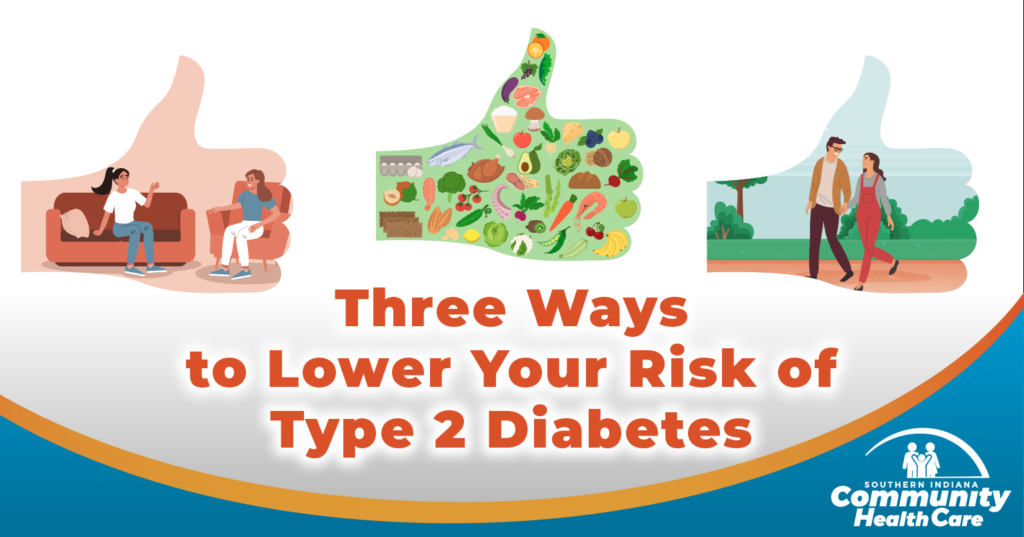Three Ways to Lower Your Risk of Type 2 Diabetes

By Curtis Thill, M.D.
While you’re reading this, a small organ behind your stomach where your ribs meet — about three ounces in weight – is doing amazing things for you. The small, pear-shaped organ is called the pancreas.
The pancreas performs a lot of complicated tasks. It creates enzymes that help your body digest food, especially fatty foods. The other big function of the pancreas, and the one that you may be most familiar with, is the production of your own personal insulin.
Insulin is a critical hormone that plays an important role in controlling sugar in your blood and helping to convert it to energy in the cells of your body.
When your pancreas can’t produce enough insulin or other issues, you may feel tired, very thirsty, go to the bathroom a lot, or have unusual hunger. Those symptoms are common with the onset of Type 2 diabetes. You may experience these symptoms for a long time, even years, before you are diagnosed with diabetes.
(Type 1 diabetes is a state where your pancreas doesn’t make any insulin or only makes a little. It is less common than Type 2 diabetes. A number of people diagnosed with Type 1 have a family history of diabetes.)
As a long-time physician, I have seen hundreds of patients with Type 2 diabetes over the past 30 years. Often I see people who may be characterized as prediabetic – they don’t yet have diabetes, but they may be at risk of later developing Type 2 diabetes. Children who weigh more than is healthy (obese) may be at risk of developing Type 2 diabetes earlier in life.
In my southern Indiana patient experiences, I also realize the challenge people can face in our region of southern Indiana in dealing with this.
These can be uncomfortable topics. But there is good news! We can often help that little three-ounce organ do its job and help us live a good, healthy life.
Preventative care
Being aware and making different lifestyle choices can go a long way in helping prevent the onset of Type 2 diabetes. It’s possible to even reduce symptoms with people who have already been diagnosed with Type 2 diabetes.
If you’re wondering if you’re at risk for prediabetes, here are some benchmarks:
- Being overweight
- Being 45 years old or older
- Exercising, walking or being physically active less than three times a week
- Drinking lots of sugary colas or juice
- Being stressed and not doing anything about it
- Having high blood pressure and not doing anything about it
Sound like you? The good news is that you can make small changes that make a big difference, especially over time. In fact, if you can just make a consistent 1% improvement every day, those improvements will add up.
What can this daily one percent improvement look like?
- Pick three specific days a week and walk briskly for 30 minutes. If you miss a day, pick it up the next day. But keep going.
- Do you have access to the internet (or a local library)? Do some research on how you can eat foods that are healthy – like more fruit and vegetables. Many people in our region make food out of a box (like macaroni and cheese) or microwave frozen foods, as well as stopping by regularly for a cheeseburger or other fatty foods. By making small changes – try to include one fresh vegetable at suppertime – you can start the process.
- If you’re stressed out and eat to help manage anxiety, talk with people you trust to see if you can reduce stress (and your blood pressure). That includes finding a good medical provider who can walk with you on your life journey.
We can sometimes say that the best time to do this was years ago. What’s the second-best time? Right now!
A board-certified family physician, Dr. Curtis Thill has practiced medicine in southern Indiana for more than three decades.
